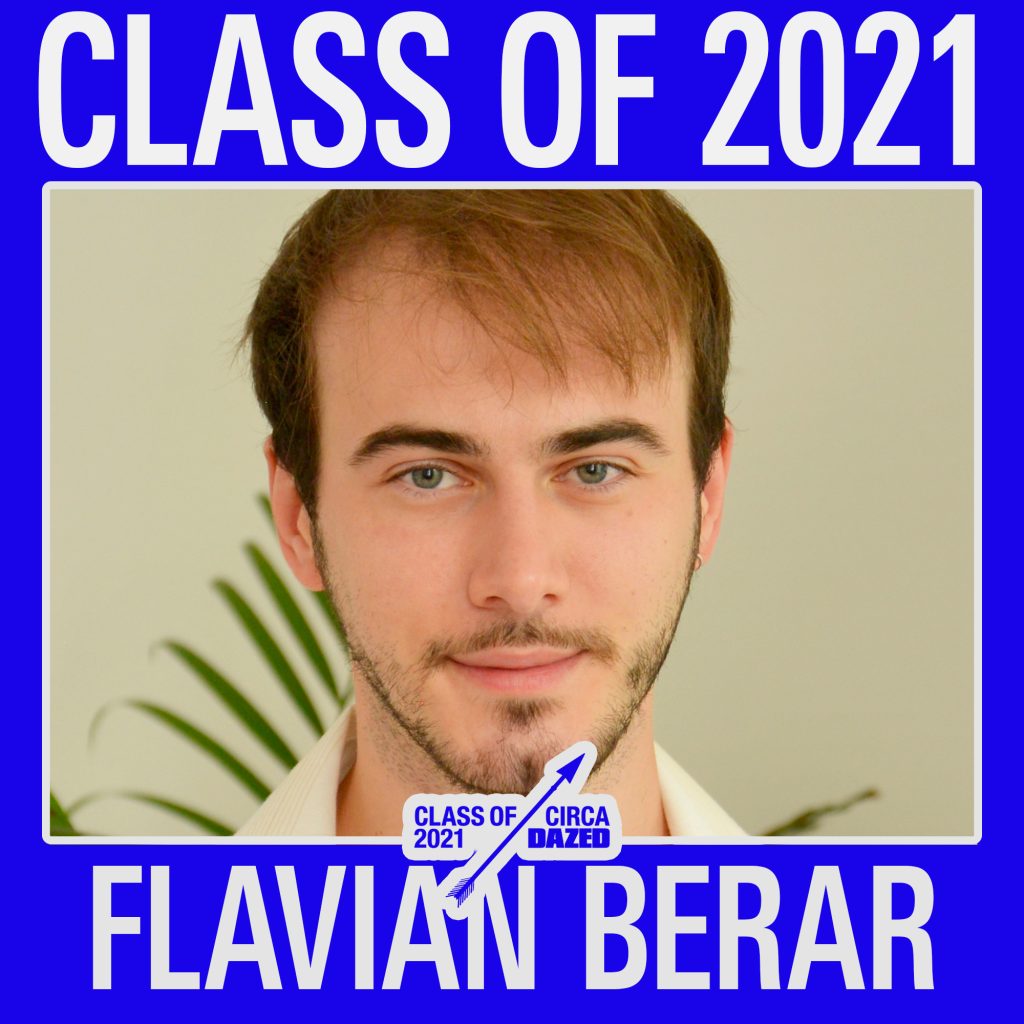Flavian Berar
I am Flavian Berar and I am a child of the 90s post-communist Romania. I have been educated in art and music for almost 12 years prior to moving to study architecture at university in London. I have been fortunate enough to grow up with the example of a strong working ethic and desire to surpass my condition, whilst nurturing the curiosity and desire to hone my skills, furthering my knowledge and understanding of the world. Currently, I identify myself as an artist and a storytelling architectural designer. For the last 9 years I have been living in London, training at The Bartlett UCL in architecture, film and 3D animation. Within my work, time becomes the fourth dimension capable of unlocking new spatial and material realities that reconcile the qualities of the digital with those of the physical world.
Throughout my journey I have had the chance to gain experience in the practices of Es Devlin, Chris Wilkinson and Norman Foster. I am currently developing my own art practice through narrative animation, writing and research on posthuman culture in the face of the 4th Industrial Revolution, whilst also practicing architecture.
Q: WHAT WAS YOUR ROUTE TO YOUR CURRENT ARTISTIC PRACTICE?
Art had always been part of my education ever since I was 7 years old and transitioning to study architecture at university had only been a consequence of trying to marry artistic creativity with practicality.
I have grown to see architecture as an embodiment of human culture and knowledge, a piece of art designed and built to be inhabited. Traditionally, I believe architecture had the power to change society and humanity. Yet having been in practice as a trainee, it appears that architects have been conditioned to follow a hierarchy and a set of rules of other establishments. Under the free market their value has been displaced and influence over shaping a fairer society has been diminished. Practicing architecture without stepping into other fields cannot challenge the status quo on its own.
It was during my architecture master’s degree that I became interested in the storytelling potential of time-based media as a way of practicing both art and architecture in an intertwined and alternative way. In my work, art is in the medium and the medium is part of the message, while architecture, space and materiality are protagonists.
One other fact that led to my current way of working with moving images is that we live in a world of constant distraction and fight for our attention. I believe the best storytellers will be those who will know how to captivate an audience whose average attention span is of no more than 12 seconds according to studies conducted in 2020. In this regard, I would like to continue using film in my practice and perhaps one day positively apply those techniques in architectural design.
Q: CAN YOU IDENTIFY ANY ELEMENTS OF YOUR COMMUNITY OR COLLABORATORS THAT HAVE HAD A STRONG INFLUENCE?
My mentors at The Bartlett have also been my closest collaborators throughout my journey so far.
Dr Penelope Haralambidou is the person who has played the biggest influence on me, guiding me towards a visionary way of approaching architecture, borrowing from art practice, filmmaking and storytelling and paving the way for me to become a well-rounded artist and architect. Under her coordination I have also been fortunate to learn directly from the filmmaker Grant Gee. I would also like to mention my tutor Michael Tite for helping me understand the feasibility of my visions and how they could extend and acquire a dimension beyond the screen; film director and designer Keiichi Matsuda for his support and technical input on time-based media and insight into the multifaceted nature of disruptive digital technologies; and sound designer and composer Kevin Pollard who I work with closely to add immersive sound to my animations.
Q: HOW IS YOUR PROJECT TIED TO THE CIRCA X DAZED CLASS OF 20:21 THEME OF ‘COMMUNION’?
‘ENGINES’ is a two part video addressing one of the most pressing current issues, the Climate Emergency and our species’ need of self salvation and attunement to an entangled mode of coexistence with nature and the universe.
Here ‘Communion’ is seen as the act of coming together under one system of belief in an attempt to reverse the damage that’s been created, while a new posthuman culture is being born. The piece attempts to answer the questions – if climate change becomes religion, then what kind of form does its temple take and what is it made of?
The first part, ‘Engines of Creation’, places a temple in the context of the Swiss Alps, growing as a suspended structure above the landscape, leaving the nature beneath it untouched. The second part, ‘Engines of Repair’ unfolds the vision of a biologically digital skin sensing its environment, a hybrid materiality made of bits and molecules, guided by digital processes, yet performing according to biological paradigms, under the Sun.
Q: HOW WOULD THE CIRCA PRIZE OF £30,000 IMPACT YOUR FUTURE PRACTICE?
The CIRCA PRIZE would give me the exposure and resources to kick start my practice and I believe there is no greater impact than this.
FOLLOW FLAVIAN BERAR ON INSTAGRAM
